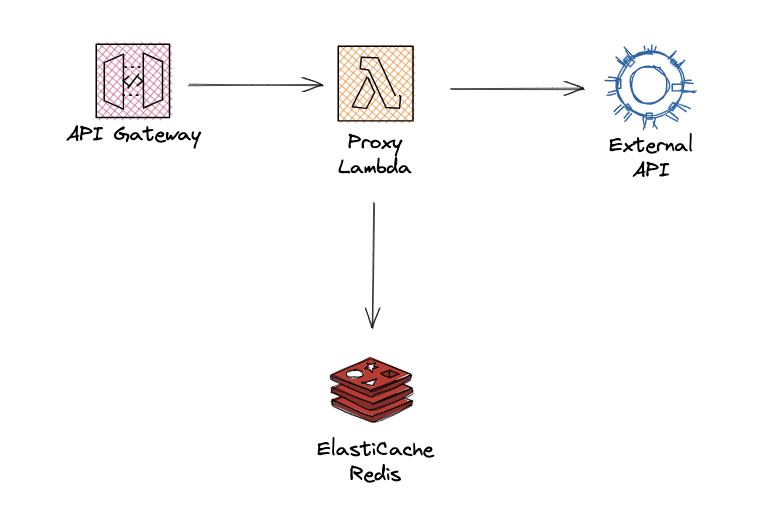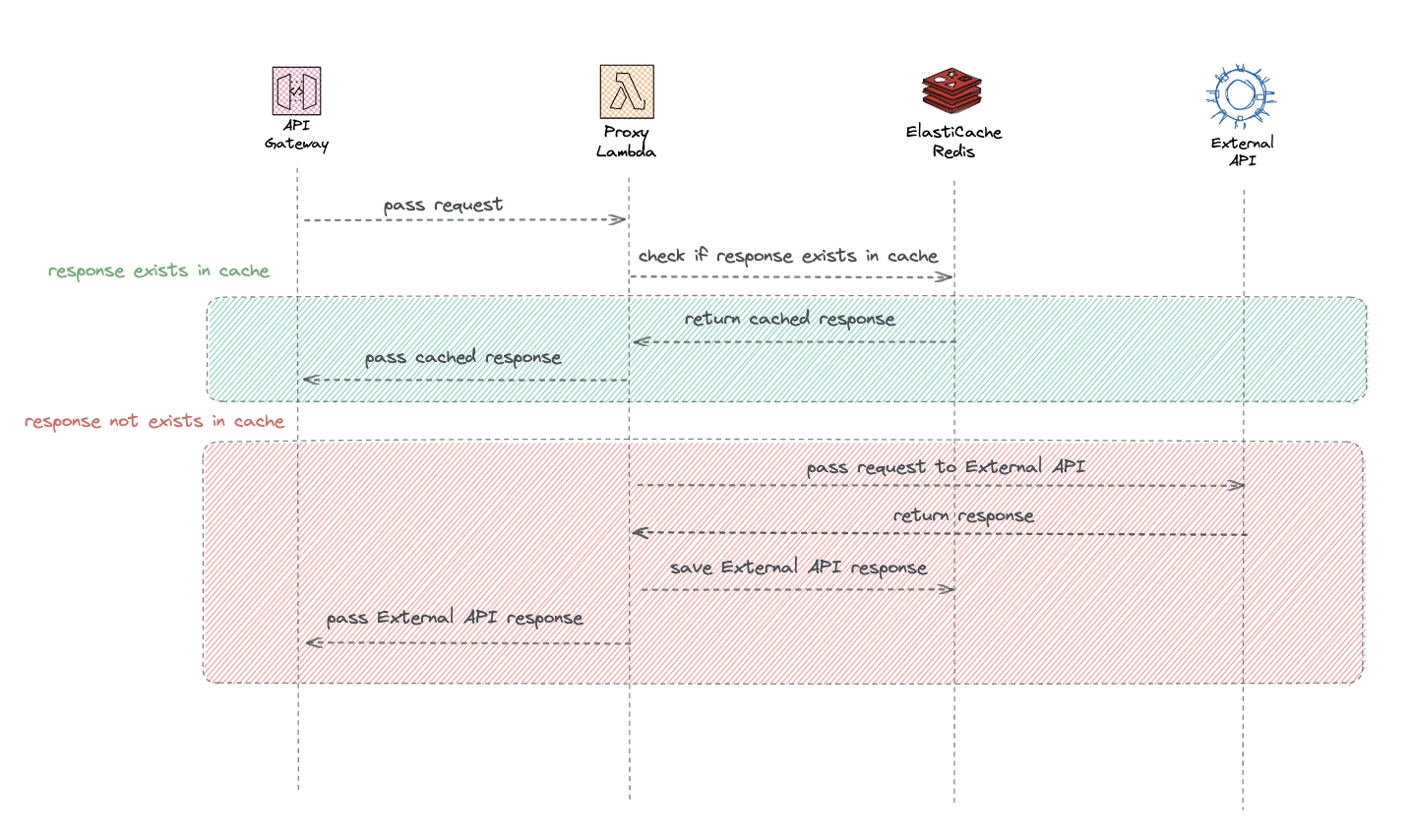This repository contains an example of using in serverless application Redis to cache external API responses.
Code source is a part of my Dev.to article in which you can fine more info about the solution.
The infrastructure in demo is provisioned using the CloudFormation template. The stack created with the default parameters will provide the following resources:
- VPC with single public & private subnet, and other base VPC components
- NAT Gateway
- ElastiCache Redis
- TypeScript Lambda & HTTP API Gateway
You can also create a stack in MultiAZ mode. Then the stack will create:
- VPC with two public and two private subnets
- 2 NAT Gateway, one per private subnet
- ElastiCache Redis in Multi-AZ mode - one master and one replica instance
- this same TypeScript Lambda
npm install
sam build
sam deploy To remove whole stack
sam deleteFlow is very simply... ProxyLambda first checks if response from External API exists in cache. As a cache key in this simple example, I just use the full request path also with query params. In complex API I can recommend a more advanced strategy for key generation. If response object exists in Redis cache, Lambda returns it directly. Otherwise, Lambda calls External API as before but additionally saves this response to the Redis cache. Thanks to this, a subsequent request to ProxyLambda for this same resource, will be returned from cache instead calling External API.
Basically the two diagrams below should explain it all
There is still the question about invalidating records in cache. Here the strategy must fit requirements. In this demo, objects in the cache are eternal. One of solution would be to hardcode expiration time on save (redis.setEx(cacheKey, 86400, apiResponse). A more elegant way would be to create dedicated invalidation Lambda, which will remove objects from the cache when receiving an event that in External API some resource has been removed or modified.

